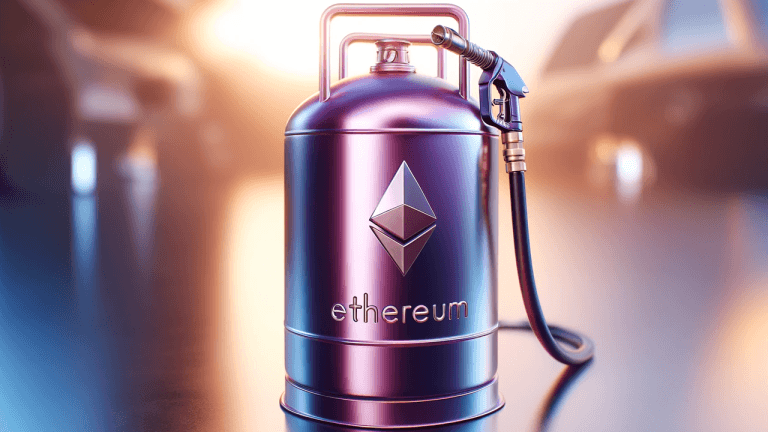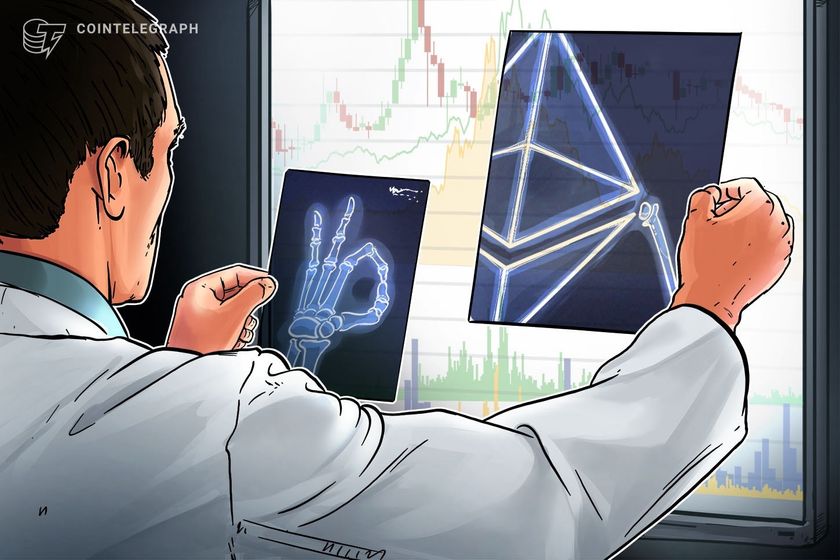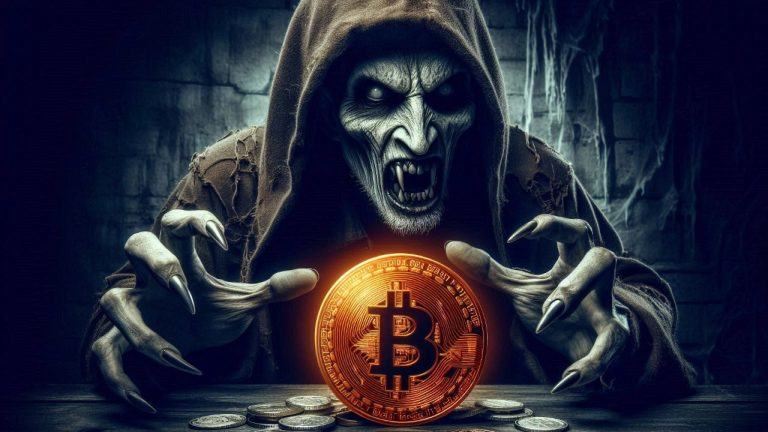 In 2025, onchain fees on Ethereum have significantly dropped, echoing the easing seen in Bitcoin’s transfer fees. According to the latest metrics gathered on Feb. 20, a high priority fee on Ethereum stands at 0.924 gwei or $0.05. Ethereum Transaction Fees Drop to Sub-1 Gwei Levels In August of last year, the popular blockchain explorer […]
In 2025, onchain fees on Ethereum have significantly dropped, echoing the easing seen in Bitcoin’s transfer fees. According to the latest metrics gathered on Feb. 20, a high priority fee on Ethereum stands at 0.924 gwei or $0.05. Ethereum Transaction Fees Drop to Sub-1 Gwei Levels In August of last year, the popular blockchain explorer […] Bitcoin miners are confronting a perfect storm of falling revenue and dwindling network activity, raising concerns about the blockchain’s long-term security. Bitcoin’s Transaction Drought Daily bitcoin (BTC) transactions have dropped to their lowest levels since late 2023, leaving the mempool—the queue of unconfirmed transactions—unusually empty. This decline has slashed transaction fees, which now barely contribute […]
Bitcoin miners are confronting a perfect storm of falling revenue and dwindling network activity, raising concerns about the blockchain’s long-term security. Bitcoin’s Transaction Drought Daily bitcoin (BTC) transactions have dropped to their lowest levels since late 2023, leaving the mempool—the queue of unconfirmed transactions—unusually empty. This decline has slashed transaction fees, which now barely contribute […]

Moderate optimism in Ethereum derivatives data fails to boost short-term investor confidence.
Ether (ETH) experienced a 20.7% weekly correction between Jan. 6 and Jan. 13, reaching a low of $2,924 and triggering $395 million in leveraged long ETH liquidations. The move tempered bullish sentiment, yet contrary to expectations, Ether derivatives suggest strong interest from both retail and institutional buyers.
Ether 2-month futures annualized premium. Source: Laevitas
In neutral markets, the ETH monthly futures premium typically trades 5%–10% above regular spot prices, reflecting the extended settlement period. Despite the recent drop below $3,000, this indicator remained above the threshold, signaling optimism from whales and market makers.

Solana’s onchain and derivatives data suggest that SOL could make a run back toward its all-time high in the short term.
Solana's native token, SOL (SOL), has surged 8% since falling to $222 on Nov. 26. Despite this recovery, some investors remain skeptical, citing the sharp correction from its all-time high of $263.80 on Nov. 23 as a potential sign of a faltering bull run. However, onchain and derivatives data suggest that SOL still holds significant upside potential.
SOL/USD (blue) vs. altcoin market cap (purple). Source: TradingView /Cointelegraph
Investor frustration partly stems from SOL’s modest 1% gain between Nov. 20 and Nov. 27, during which the broader altcoin market capitalization climbed 12%. Several tokens outperformed significantly, with Stellar (XLM), Celestia (TIA), Fantom (FTM), Uniswap (UNI), and Polkadot (DOT) posting gains of 40% or more during the same period.

StarkWare is looking to reduce its already cheap fees as it anticipates a boom in blockchain activity and gas fees in the coming months.
StarkWare CEO Eli Ben Sasson says he expects transaction speed on the firm’s Ethereum layer 2 Starknet to increase four-fold while fees fall “5x” over the next three months.
The network improvements will mostly come from “better compilation and faster execution” on Cairo — Starknet’s native smart contract language, Ben Sasson told Cointelegraph at the DevCon 2024 in Bangkok last week.
It would see Starknet cross the 1000 transactions per second (TPS) milestone and compete with the likes of Solana, which typically processes a non-vote TPS between 800 to 1050, data from Solana Compass shows.
 Duo Nine, the founder of YCC, alerted others about an ongoing vampire attack on Bitcoin, which Satoshi Nakamoto foretold in the Bitcoin whitepaper. Nine explained that the inclusion of third parties siphoning value from the Bitcoin blockchain to other blockchains might affect its operability in the future. Bitcoin Facing Troublesome Vampire Attack Foretold by Satoshi […]
Duo Nine, the founder of YCC, alerted others about an ongoing vampire attack on Bitcoin, which Satoshi Nakamoto foretold in the Bitcoin whitepaper. Nine explained that the inclusion of third parties siphoning value from the Bitcoin blockchain to other blockchains might affect its operability in the future. Bitcoin Facing Troublesome Vampire Attack Foretold by Satoshi […]

Data shows the Ethereum co-founder has nabbed the highest share of “KOL mindshare” on X this week, posting about Ethereum’s roadmap and defending from Ethereum critics.
Ethereum co-founder Vitalik Buterin has held the top spot in “KOL mindshare” for the last week on Crypto X amid a recent flood of criticism toward the blockchain and the Ethereum Foundation.
According to Andy, host of the crypto show The Rollup, who cited data from Kaito AI, “wartime mode” Buterin had the highest relative KOL mindshare over the past seven days at 1.69%, followed by Helius Labs CEO Mert Mumtaz at 1.18%.
Buterin was forced to write a lengthy post on X recently, defending the Ethereum Foundation’s routine sale of Ether (ETH).
 While bitcoin’s price has remained above $68,000, onchain fees tagged along for the ride. Earlier this month, fees were below $1, but two days ago on Oct. 17, the average transfer fee hit a peak of $6.32. Today, onchain fees stand at around 22.9 satoshis per virtual byte (sat/vB), or roughly $3.61 per transaction. Bitcoin’s […]
While bitcoin’s price has remained above $68,000, onchain fees tagged along for the ride. Earlier this month, fees were below $1, but two days ago on Oct. 17, the average transfer fee hit a peak of $6.32. Today, onchain fees stand at around 22.9 satoshis per virtual byte (sat/vB), or roughly $3.61 per transaction. Bitcoin’s […]

Declining DApp activity and lackluster demand for the ETH ETFs could limit Ethereum’s recent price rally.
Ether (ETH) price surged 9.4% between Oct. 10 and Oct. 15, reaching its highest level in two weeks at $2,687. However, despite these recent gains, Ether remains down 25% over the past three months, reflecting investor disappointment with the recently launched spot Ether exchange-traded funds (ETFs) and the overall lack of demand for ETH, despite Ethereum's focus on prioritizing layer-2 scaling solutions.
In the past 7 days, the Ethereum network saw a 23% decline in onchain decentralized applications (DApp) volumes and this downturn has sparked speculation that Ether's price could follow suit.
While various factors have negatively affected Ether’s price since mid-July, it is particularly striking that the overall cryptocurrency market capitalization remained relatively flat over the same three-month period.

BNB price staged a mild recovery, but could lackluster network activity and less-than-stellar Binance launchpad results put a cap on the gains?
BNB (BNB), the native token of BNB Chain, gained 4.1% from Oct. 10 to Oct. 11, signaling resilience after briefly testing the $555 support level. BNB price has remained relatively stable since July, even as the broader altcoin market saw a 15.6% decline. This performance has solidified BNB as the third-largest cryptocurrency, with a significant $15 billion market capitalization advantage over Solana (SOL).
Ochain activity for BNB Chain dropped by 37% over the past week, raising concerns among investors about the sustainability of the BNB recent outperformance. Traders are wary that Ethereum's layer-2 scaling solutions are gaining traction, especially following the launch of the Base network, which offers fast and exceptionally low-cost integration with Coinbase, the leading US exchange and Web3 wallet provider.
It could be argued that BNB's value is partly driven by the offerings of the Binance exchange, including exclusive launchpad access and trading fee discounts, which may reduce the need for BNB usage on the BNB Chain itself. However, beyond network transaction fees, BNB is widely utilized across the ecosystem's decentralized applications (DApps) for trading, staking, yield farming, real-world assets (RWA), lending, launchpads, gaming, and derivatives markets.